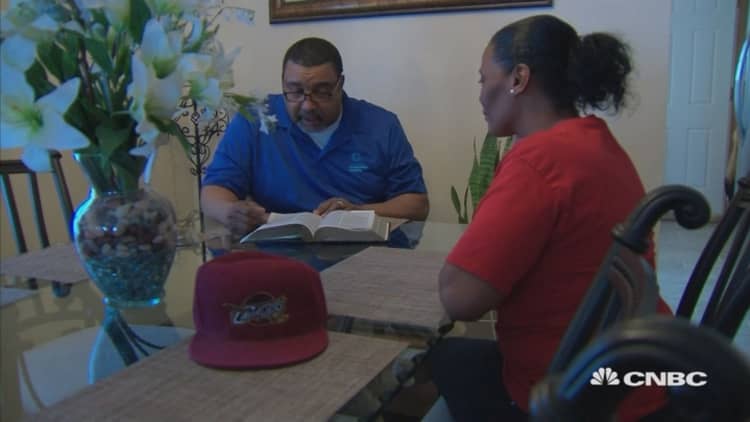
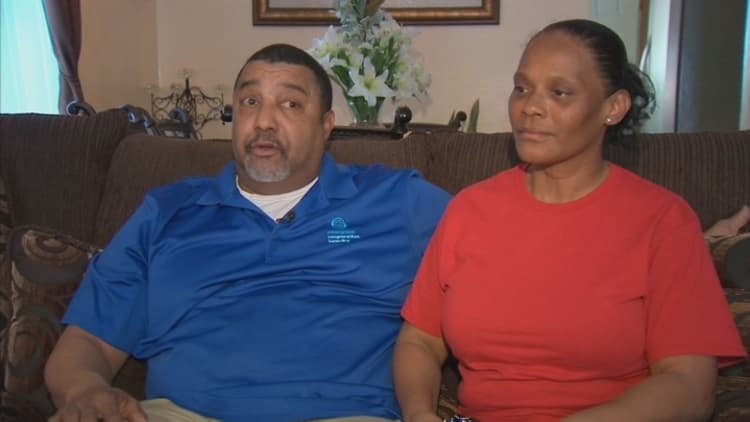
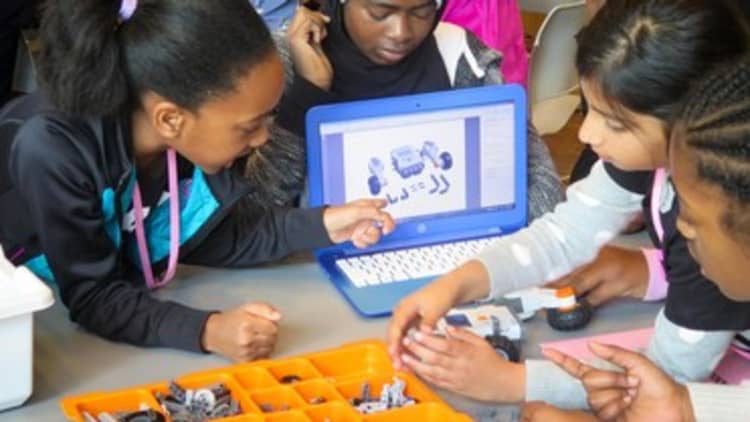
When the dust settled after the financial crisis in 2008, there was some whispering privately that low-income Americans, who just didn't know better, had overreached. It was poor Americans who had in fact triggered the housing collapse — not a perfect storm of culprits including failed corporate governance, risk-taking from wealthy Wall Street guys and widespread mortgage fraud.
"There was this narrative that people, who were too dumb, signed paperwork," said Mike Loftin, an affordable housing executive based in Santa Fe, New Mexico. "But that's the wrong conclusion."
Loftin is chief executive of Homewise, an enterprising nonprofit with roughly $90 million in assets. Run like a for-profit venture, Homewise offers affordable mortgages with low down payments — hallmarks of many nonprofits. But the organization also develops and sells residential property to clients. Property sellers and mortgage lending officers are all salaried staffers. That means nobody works on commission, and prospective homeowners aren't nudged into borrowing more than they can afford.
Plus, there's a big financial education component. Future homeowners are paired with money coaches. Basic savings habits are ingrained. Down payment savings goals are set. And complex homeownership terminology is explained in mandatory Saturday classes. The courses have become so popular locally that non-Homewise clients are referred. Financial preparation well before loan origination and shopping for property can take months and in extreme cases years.
"We have tough love around here," Loftin said.
A holistic approach to the homebuying process can work with dramatic results for renters who walked in the door with little or no credit or savings. There's a chance they didn't know what an adjustable-rate mortgage was. And they basically assumed homeownership wasn't for them.
Homewise's collective mortgage delinquency rate is under 0.9 percent. That's well below the average delinquency rate of 3 percent for Fannie Mae's and Freddie Mac's mortgage programs, and under the roughly 9 percent delinquency rate for Federal Housing Administration, or FHA, loans. Fannie, Freddie and FHA often serve low-income borrowers.
Every year, Homewise helps a few hundred families become first-time homebuyers. Its goal is helping families who increasingly can't afford to buy a home where they grew up — a prevailing fear among many working- and middle-class Americans. "We have people who can't own a home in their hometown," Loftin said.
But successful programs like Homewise are not widespread, in part because such organizations are operationally intensive. Homewise employs some 60 people in Santa Fe and Albuquerque. Both offices originate about $50 million in mortgages, and service some $200 million in homeowner loans every year. That's a lot of logistics.
And across the affordable housing field, everyone is churning under tight mortgage credit, and a low tolerance for lending risk. Some eight years since the collapse, access to credit is constrained, and minority borrowers are getting hit especially hard.
"We're taking half the credit risk we took in 2001," said Laurie Goodman, director of the Housing Finance Policy Center at the Urban Institute. "We've closed the barn door, long after the horses have left," she said.
4 million loans not originated
African-American and Hispanic households constitute a large share of an estimated 4 million loans that were not originated due to tight credit standards from 2009 to 2013, according to Urban Institute data. Loans to African-American and Hispanic borrowers declined by 50 percent and 38 percent, respectively, compared a decline of 31 percent for white borrowers. Loans to Asian borrowers increased by 8 percent.
Piling on to challenges faced by minority borrowers, small independent nonbanks are filling the market share vacated by larger institutions. But that's not necessarily a good thing, as lending risk is now being pushed onto smaller entities that may or may not be able to take on the risk.
Against this backdrop of tightened mortgage credit, programs like Homewise appear all the more striking.
Last year, Homewise helped some 240 families — many of them Hispanic — turn the key on their first homes after years as renters in apartments or trailer parks. Many are young families and adults, who were born and raised in New Mexico.
They had watched wealthier out-of-towners, including baby boomers, swoop in and buy second homes for retirement and lift prices for everybody. Maybe homeownership really was a pipe dream.
But Homewise clients have shown they can learn and lock in good financial habits. They can squirrel away $75 a month for years toward their down payment of several thousand dollars for a home valued at under $175,000. That's what Saul Carta did.
Carta works for the city of Santa Fe and drives around seniors. He was living in a trailer park with his mom when he first approached Homewise. "I didn't have much credit," Carta said. Saving for a down payment "seemed like 'Mission Impossible' to me in that first meeting."
He went on to save and repair his credit. "I never really saved so I had to adjust my habits," Carta said. He moved into his first home with his mother Maria "Lucy" Carta last year in Santa Fe.
If there's any silver lining in the housing collapse, it's a re-emphasis on education and an unpacking of the complex homebuying process for prospective buyers.
"From where I sit, meeting with policymakers and lenders, the crisis has elevated our national value of counseling and homebuyer education," said Paul Weech, president and chief executive of NeighborWorks America. The group supports more than 240 nonprofits, including Homewise, that work in affordable housing and community development.
The larger point is that financial education can help pave a homeownership path for many families — even Hispanic and African-American households that have been disproportionately hit by tight mortgage lending standards.
"We bet on working-class people," said Loftin of Homewise. "We are betting on building the American middle class."
But Loftin's program model was an early adopter and isn't yet prevalent. There are only roughly two dozen nonprofits structured like Homewise in NeighborWorks America's network. And each nonprofit helps a couple hundred households achieve homeownership per year.
For many more Americans, the divide between renter and homeowner only seems to be widening. Said Loftin, "Not having that dream of homeownership possible means you're going to short change a lot of people."
Why credit is so tight
Of course, more vigilant enforcement after widespread mortgage fraud since the crisis can benefit everyone and reduce risk. A lot of housing policy discussions since the meltdown have focused on clamping down on bad behavior and seeing red flags more clearly and quicker.
But some housing experts argue the pendulum has swung too far toward aggressive enforcement that's having unintended consequences, in particular, for the FHA mortgage market. FHA loans often go to first-time, minority homebuyers.
The soaring cost of servicing delinquent loans and significant litigation risk associated with defaulting loans are prompting lenders to pull back on FHA lending.
Another key factor is the use of the False Claims Act. Violators that submit false or fraudulent claims are required to pay civil penalties and, more notably, a fine equal to triple the loss amount. The False Claims Act, known as the "Lincoln Law," dates back to the Civil War and was used to combat fraud by companies that sold supplies to the Union Army.
The statute has more recently been used on FHA lenders. If a lender, for example, is found to have violated the False Claims Act on a loan for which the government suffered a $200,000 loss, the lender is subject to a $600,000 penalty. Multiply that hypothetical violation on, say, 1,000 loans of the same amount and you're suddenly on the hook for $600 million in penalties.
"Being subject to triple the damages is scaring the hell out of lenders," said Goodman of the Urban Institute.
Bottom line. If you're a lender staring at that kind of financial exposure, you're going to at least pause if not retreat, which is what's happening.
For the working poor, it's harder and harder to survive. And when you're surviving, you're not thinking about buying a house. You're just trying to put food on the table for your children.Melanie FaisonExecutive Vice President, NeighborWorks Columbus
The pullback has been strongest among the lenders with the biggest pockets, who also happen to be the FHA's largest lenders. For example, Wells Fargo's share of the FHA market contracted to 16 percent from 37 percent between 2011 and the first quarter of 2015, according to Urban Institute data. JPMorgan Chase's share of the market has shrunk to 2 percent from 9 percent, and Bank of America's share has contracted to 2 percent from 17 percent for the same period.
As of the first quarter of 2015, the top five lenders were responsible for about 38 percent of FHA originations, down from 72 percent in 2011.
And while a less concentrated market is usually welcome and triggers more competition and consumer choices, the FHA market hasn't seen that ripple effect.
Overcautiousness about risk has meant abnormally high credit scores required to get an FHA loan. The share of borrowers with credit scores below 640 has gone from 45 percent in 2001 to 55 percent in 2007 during the housing bubble, to 7 percent in 2011 and 6 percent in 2014, according to CoreLogic servicing data. Credit scores range from 300 to 850.
Plus, smaller, thinly capitalized and lightly regulated nonbanks are taking up market share left by the larger lenders to create a potential "lose-lose situation," according to Goodman.
Thriving, or just surviving?
This contracted lending environment is something affordable housing experts manage day in and out.
"The lender will take five or six extra steps to get into compliance," said Melanie Faison, an affordable housing executive based in Columbus, Georgia.
Many of Faison's clients are African-American families and include residents hit by cutbacks at the nearby Fort Benning army base. As executive vice president of the HomeOwnership Center for NeighborWorks Columbus, her office pursues FHA loans for first-time homebuyers. With extra hurdles, the process can now take up to 60 days versus 30 days prior to the financial collapse.
The Columbus office helps roughly 80 households a year enter homeownership, compared to some 150 families prior to the crisis, Faison said.
And keep in mind minority households reaching for homeownership are facing struggles felt by nearly all Americans regardless of ethnicity — rising cost of living, lowered job security and stagnant wage growth. Nearly half of U.S. non-homeowners say their financial situation prevents them from buying a home, according to a Bankrate.com report released in early February.
Plus, 29 percent said they can't afford a down payment and 16 percent said their credit isn't good enough to qualify for a mortgage, according to Bankrate.com. Some Americans are opting for multigenerational households as a cost-savings move.
Many Americans are simply surviving — not saving and thriving into homeownership.
"People in this area, incomes are depressed. Cost of food, health insurance, everything is going up," said Faison about the Columbus, Georgia, region. "For the working poor, it's harder and harder to survive. And when you're surviving, you're not thinking about buying a house. You're just trying to put food on the table for your children."

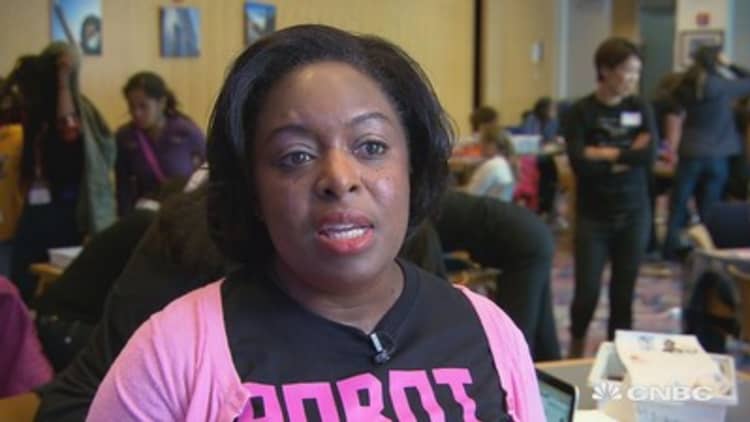
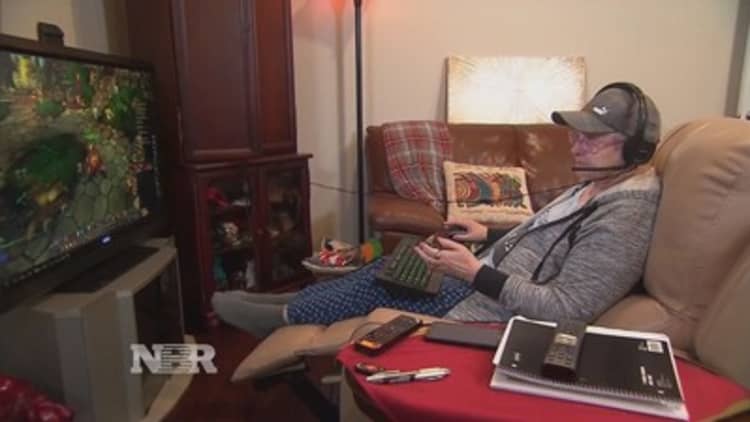
Since the crash and rise of stricter lending, some housing rhetoric has emerged that says maybe homeownership isn't a wealth-accumulating solution for everyone. Renting isn't so bad. Separate the economic wheat from the chaff is the inference.
Data already indicate new U.S. renters will outpace new homeowners in the coming decades. From 2010 to 2030, the U.S. will see 5 new renters for every 3 new homeowners, according to the Urban Institute. Broken down another way, the growth in rental households will exceed that of homeowners by 4 million during those three decades.
But affordable housing advocates argue at least offering a path to homeownership — a choice — is key to sustaining and building the middle class.
"We are still heavy into homeownership," said Robert Calvillo, executive director of Affordable Homes of South Texas. Similar to Homewise, the Texas nonprofit offers a multistep program, from financial education to building and selling property at roughly cost, or no more than 10 percent profit. Operationally heavy, its staff has grown to about 70 employees from under 20 workers about five years ago.
Pushing the social enterprise model
Based in McAllen, Affordable Homes of South Texas is about five miles north of the Mexican border and some 240 miles south of San Antonio. The group serves a remote, largely Hispanic population that might not otherwise have access to affordable housing. Its mortgage delinquency rate is at or below FHA delinquency rates.
But even for some nonprofits, the social enterprise model can only go so far.
The Texas group has some $75 million in assets, and a roughly $50 million loan portfolio. But community development block grants from the U.S. Housing and Urban Development and local county funds have shrunk over the years. "Banks have been generous with us," said Calvillo. "But at a certain point, we can only borrow so much money."
To make up for the funding shortfall, the group in 2012 rolled out for-profit ventures. The subsidiaries offer for-profit mortgages, insurance and other services for families who exceed the income cap to qualify for nonprofit services. The for-profit subsidiaries generate more than $100,000 in net income per year.
The Texas group's board decided the subsidiaries would not detract from the group's core, nonprofit mission. "With any business you need to be flexible, and ebb and flow with the market," Calvillo said. "But other nonprofit boards may or may not see that."
A place to call home
In the end, approaching the full scope of homeownership — not just how the mortgage works — through enterprising solutions can help would-be homeowners succeed.
Take Jesse and Melissa Berryhill of Santa Fe. They got saddled with a bad car loan, and buying a home seemed improbable. "I was skeptical about the whole process," said Jesse Berryhill, who works as an environmental technician for the Los Alamos National Laboratory. He heard about Homewise word-of-mouth and began shoring up his credit with his wife, a high school science teacher.
"You need to watch that credit card, get that debt down and save 'X' amount of money," said Berryhill. "I really wanted to have our own place, a place we could call home." The couple eventually saved enough for a down payment on a roughly $300,000 home, and moved in last year with their two daughters.
Said Lofitn, "If you make homeownership accessible and do it the right way, it's a success for families — and America."
— Data visualization by CNBC's John Schoen.
Watch CNBC's "Power Lunch" each day this week to see work being done to bridge America's divide.













